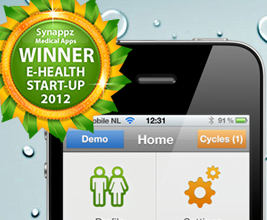 Your communications professional life was busy enough when, only a few digital moments ago, your internet marketing mainstay was a good website. And your hardware was a clunky desktop PC.
Your communications professional life was busy enough when, only a few digital moments ago, your internet marketing mainstay was a good website. And your hardware was a clunky desktop PC.
 Your communications professional life was busy enough when, only a few digital moments ago, your internet marketing mainstay was a good website. And your hardware was a clunky desktop PC.
Your communications professional life was busy enough when, only a few digital moments ago, your internet marketing mainstay was a good website. And your hardware was a clunky desktop PC.
The boss (and the budget) was happy with that, but the simplicity of that early state is long past. And one of the new challenges for the planners and forward-thinking managers is how to keep up with the consumer/patient/customer on multiple digital devices.
The healthcare marketing watchword for this year is multi-screen. If it’s not a line item in your plan, it will be soon. Your audience is a moving target and their ordinary life is increasingly connected via two (or probably more) digital devices.
Take your own Screen Inventory…
Should the boss or anyone else need convincing, the evidence is close at hand. Consider your own “tethered-to-tech” activities and devices at home, office, vehicle and in your pocket:
- Television
- Desktop computer
- Laptop
- Tablet
- Smartphone
- SmartWatch, activity tracker, etc.
And on the horizon…Google Glass and next-gen wearable tech. (Not to mention the convergence of television and the Internet as Smart-TV sets.)
“Arguably the biggest shift in consumer behavior in the last few years has been the explosion of devices and the number of screens in a consumer’s life,” observes artist and speaker Tom Fishburne. “That has a major impact on media consumption and how marketers reach consumers.”
For major brands, multi-screen marketing has moved from “emerging” to “near-mainstream” during the past few years. “Media spend attributed to multi-screen advertising campaigns is expected to grow from 20 percent of budgets today to 50 percent in the next three years, according to a study by ANA (Association of National Advertisers) and Nielsen conducted among client-side marketers, agencies and media sellers.
“Multi-screen campaigns were defined as those that run during a similar timeframe across two or more screens including TV, computer, tablet, mobile phone and digital place-based media.”
And just to make things a lot more complicated, individuals seamlessly slide between or among more than one device for a given task. “This means advertisers have to take a holistic approach to their marketing strategy,” a Microsoft study reports, “and adjust the content to fit the context of various screens while considering consumers’ multi-screen habits.”
About Cross-Screen Engagement
Achieving marketing and advertising objectives is a matter of reaching the right audience with the right message by way of the right device at the right moment. Certainly multi-screen targeting is easier said than done.
Historically, your television set (or more likely, several sets) has been the “first screen.” But now, Advertising Age advises, “Say hello to the new first screen: your phone. Daily time spent on mobile devices is now outpacing TV in the U.S. for the first time, according a newly-released 2014 AdReaction study from Millward Brown.”
To help us sort through the cross-screen maze, Google provides some insightful stats about our new multi-screen world:
- 34% of us use the device that’s closest to us when looking for information.
- 38% of our daily media interactions occur on a smartphone.
- 48% of searches conducted on a PC/laptop are planned.
- 54% of smartphone use is motivated by communication, and 33% by entertainment.
- 63% of tablet use is motivated by entertainment, and 32% by communication.
- 79% of tablet use occurs at home, while 21% occurs out of the home.
- 80% of searches conducted on a smartphone are spontaneous.
- Browsing the internet (81%), social networking (72%), and shopping online (67%) are the top activities performed when sequentially screening between devices.
- Consumers rely on search to move between devices.
- Emailing (60%), internet browsing (44%), and social networking (42%) are the top 3 activities performed during simultaneous screen usage.
- Our time online is spread between 4 primary media devices: TV (43 min.), PC/laptop (39 min.), tablet (30 min.), smartphone (17 min.).
- Smartphones are the most common starting place for online activities.
- TV is a major catalyst for search.
Research into connected experiences by Microsoft Advertising reveals new opportunities for marketers to reach and engage consumers. Their conclusions:
- Marketers will only succeed in the multi-screen world if they create content that enables personal engagement across TVs, PCS, consoles, tablets and mobile devices.
- Each device requires a different approach; for example, messaging on TV is the best way to deliver an emotional story and achieve brand building.
- Mobile advertising should feel like it’s adding value rather than creating an interruption for the consumer.
- There are four pathways of multi-screen behavior. Each one has different motivators. For example, Content Grazing behavior responds well to quick, efficient bits of content.
You’ll find the Microsoft report available via this page.







